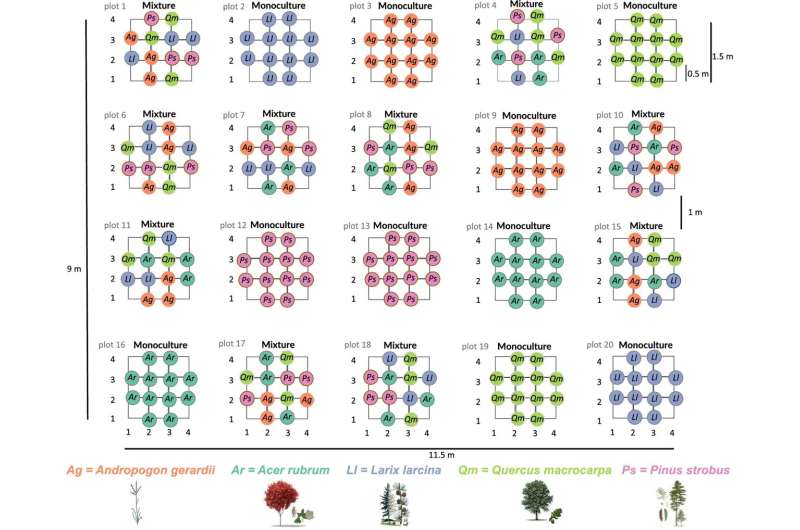This article has been reviewed according to Science X's editorial process and policies. Editors have highlighted the following attributes while ensuring the content's credibility:
fact-checked
trusted source
proofread
Uncovering the role of beta diversity in ecosystems

As climate change progresses, scientists want to better understand how species interact across habitats to preserve diversity. Key to these efforts is the concept of beta diversity, which explores species that thrive exclusively in specific habitats. The University of Minnesota's Cedar Creek Ecosystem Science Reserve in East Bethel is an ideal place to study beta diversity because it gives researchers access to many distinct habitats in one place.
Karen Castillioni, a postdoctoral research associate in the College of Biological Sciences, along with Associate Professor Forest Isbell, wanted to know how beta diversity affects plant biomass, the total mass of living plants in a given area. Plant biomass is crucial for various ecological and environmental functions, including carbon sequestration and supporting food webs.
During the first phase of an experiment at Cedar Creek called BetaDIV, the researchers looked at five habitats: oak savanna, where bur oak tree dominates; coniferous forest, where white pine dominates; deciduous forest, where red maple dominates; bog, where tamarack dominates; and an old grassland where big bluestem dominates.
The team transplanted seedlings from these species to each habitat in monocultures and mixtures of multiple species planted together to observe how they performed and used seedling survival to measure the rate of biomass production, known as ecosystem productivity.
The first results of this ongoing experiment were recently published in Landscape Ecology. The study found:
- The species that survive most in monoculture also tend to be the same species that are most dominant (i.e., greatest relative abundance) in mixtures, on average, across all habitats.
- Species tend to survive more in habitats where they are most productive—the habitats they dominate outside the experiment.
- Studying beta diversity in this way could help scientists preserve biomass as the climate changes.
"Plant establishment can be very difficult in this experiment because they have to be able to survive as seedlings in a new environment," Castillioni said. "We are trying to track if they can become established adults. And then, in the long term, we can start measuring things like productivity, things like how much biomass the trees and grasses produce over time as they occupy different ecosystems in the landscape."
As the experiment continues, the team will be looking for evidence that species produce more biomass in mixtures than expected in monocultures.
More information: Karen Castillioni et al, Early positive spatial selection effects of beta-diversity on ecosystem functioning, Landscape Ecology (2023). DOI: 10.1007/s10980-023-01786-9
Provided by University of Minnesota


















